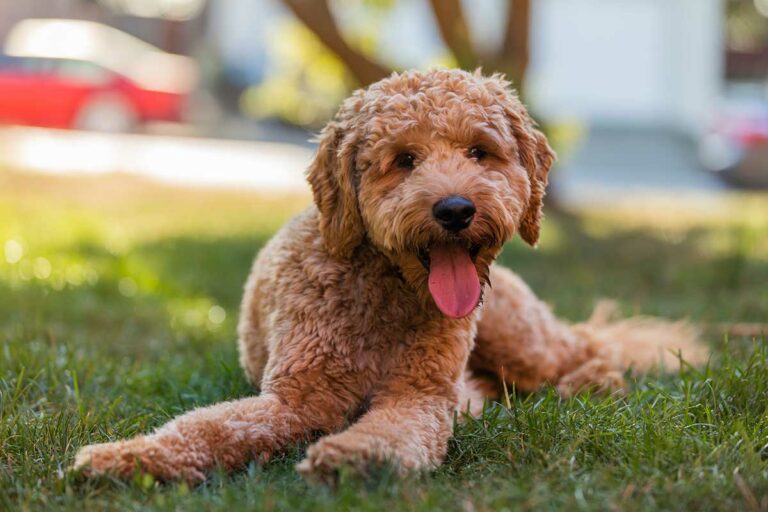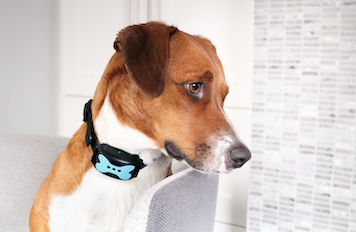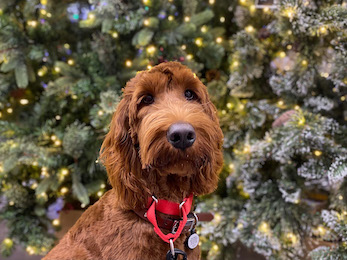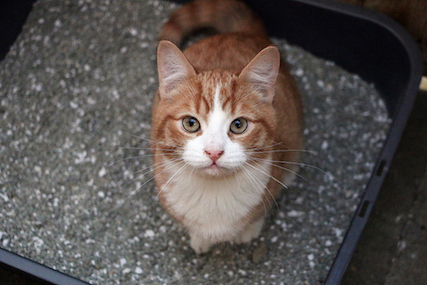If you have been on top dog trends in the last 5 or so years, the word “doodle” is definitely in your vocabulary. This popular, teddy-bear-like dog can come in many forms: minis, standards, and of course with the many other varieties of breeds. There are the ever-famous Goldendoodles and Labradoodles and newer additions like the Sheepadoodle, Bernedoodle, and Aussiedoodle, or even Whoodles, Newfie-Poos, and Shi-Poos. With their popularity, many people are interested in finding their own. Before you decide if a doodle is right for you and your family, read on to find out their needs, behavioral quirks, and more.
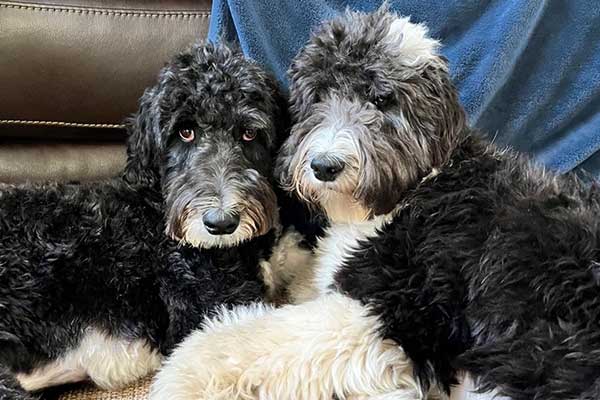
What Doodle is right for you?
There are a variety of doodle breeds that differ in size and personality type. These different breeds have different energy and social needs, so it is important to investigate the needs of the specific doodle you are interested in. Also, most doodles require lifelong grooming, so not only will you be paying a decent price for the upfront costs of a puppy, but you will also need to consider ongoing costs that may be higher than other breeds. Their popularity makes them appear as goofy teddy bear dogs, but they each have their own temperaments and needs that owners will need to consider prior to purchase.
Each breed of doodle is going to be a little bit different than another breed of doodle. Also, please remember that the breed characteristics are generalizations, each dog is going to have its own personality!
Labradoodle
- Smart and sociable and are generally friendly to both dogs and children
- High energy and intelligent – therefore a simple walk around the block is not going to be enough to satisfy their needs. Puzzle toys and different exercise activities are important
- Eager to please and enjoy training
Goldendoodle
- Active and playful – They are well known for their athleticism and can be great companions for active lifestyles that include fetch, agility, or other fast-paced work
- Highly intelligent and known for their loyalty to humans
- Popular as emotional support or therapy animals
Aussiedoodle
- Often sought out for their brilliant color varieties (merle)
- Requires a lot of mental and physical exercise. They are a breed that is very much always on the go and better for active families
- Very social and want to be near their humans
- Like all breeds, without an enriched environment, they can become destructive. Because of their high need for stimulation, owners may see a lower tolerance from their Aussiedoodles when they aren’t exercised enough (as they are the offspring of two highly intelligent breeds)
Sheepadoodle
- Affectionate and even-tempered, especially with children
- Smart, playful, goofy and often described as the “clowns of doodles”
- Sometimes described as “Velcro dogs”, they are very attached to their owners and people
- High energy and require various types of environmental enrichment
Bernedoodle
- Described as hardworking and loyal to their families
- Some describe them as “stubborn” from the Bernese Mountain Dog side
- May be predisposed to being shy around strangers and require proper socialization
- Love attention, especially with people they are familiar with
- Need at least moderate amounts of exercise
Notes on Doodles
As you probably read above, doodles are active dogs that require a lot of environmental enrichment to be a successful family member. They are very much people pleasing dogs that adore their owners and crave attention. They are affectionate, funny, and often aim to please. Not only is each breed unique with characteristics from their parent breeds, but each individual is also unique – the doodle you bring home may NOT be a picture-perfect representation of its breed. This is even more apparent for doodles than other breeds because there are no “breed standards.” The recommendations for specific breeds above DO NOT mean that other breeds do not require those same recommendations. For example, all dogs need to be socialized and all dogs require adequate exercise.
General Notes on Minis
There is a lot of variety on sizing for these dogs and although most minis are described as being less than 30 lbs. when they are fully-grown, because they are a mixed breed, you may not get a dog that is guaranteed to be that specific size. Mini poodle characteristics are different than the standard poodle, and so mini-doodles are not simply mini-versions of their larger counterparts. It is important to research minis specifically if that is the size you are considering for your family. Characteristics of a mini poodle that may come out in doodles: more excitable, impatient, and high-strung than standards.
Alright, you picked a breed. Now What?
After doing some research on the type of doodle that will fit with your family, the next step is finding a dog! This part can be fun and exciting, but also very overwhelming. Because doodles do not have standards like pure-bred dogs and they have been extremely popular, many inexperienced breeders or even puppy-mills have been breeding these dogs at a high rate. It is important to find the right breeder. We recommend that you look for a breeder that has a small operation. What we mean by that is a breeder that only breeds a few specific breeds, maybe Poodles, Golden Retrievers, and Goldendoodles. Other small operations may only breed one or two types of doodles such as standards and minis of the same type. Try to avoid breeders that breed many different types of doodles. We also recommend being able to visit the site and living space of the puppies if possible. Meeting the parent dogs is also encouraged. During the COVID-19 pandemic, some breeders had safety restrictions (for obvious reasons!) and so you may consider asking to see the space virtually. Also ask to see how many litters the mom has had. A good breeder will only breed a female 2-3 times with space between litters. Breeders that start potty training and socialization (safely) are also extremely helpful. You also want to see health tests for the parents. Your veterinarian can help you determine the most important tests for the specific dog you are looking for – size and breed considerations matter. Remember, there are not a lot of regulations for these mixed breeds, so it is up to you as the consumer to support quality breeding practices.
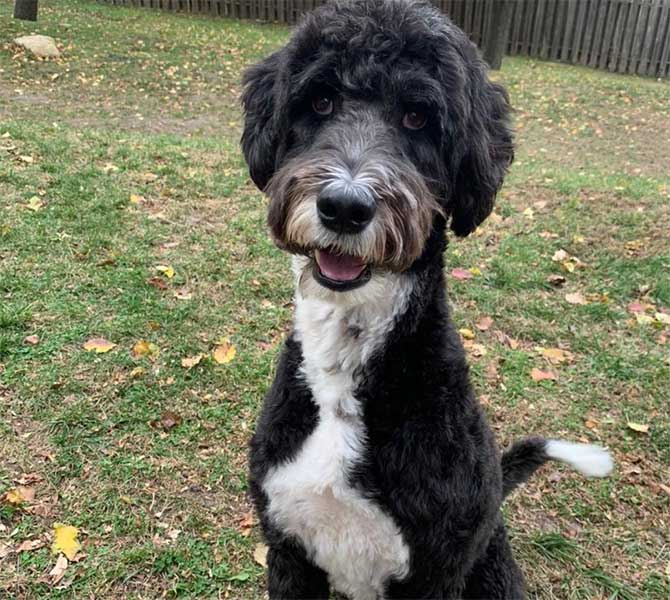
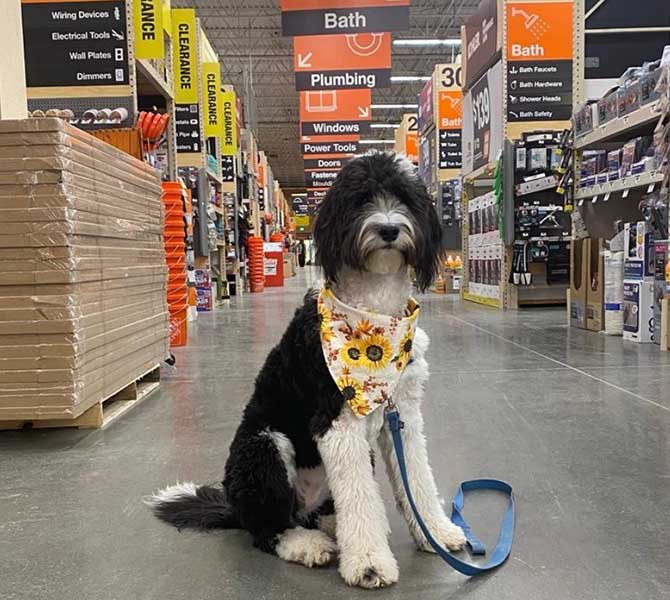
Myths about Doodles
We love doodles at Beyond the Dog! In fact, I own two Sheepadoodles (see the goofs above). But we feel that we are doing prospective owners a disservice by not mentioning some of the myths about doodles that have been perpetuated in social media.
First is that hypoallergenic dogs do not exist. The AKC backs up this claim and you can see more here. A better description for the doodle breeds is low-shedding. Many doodles do not trigger allergic reactions in people that typically have them, but it isn’t a guarantee. A lot of doodles end up getting rehomed because the owners thought their dog would be hypoallergenic, but the owners are still having reactions. Each dog is different, and if you have allergies, you may consider a rescue rather than a breeder so that you can meet with the dog and see if there are allergic reactions in your home prior to bringing home a companion you have never met (e.g., an 8-week-old puppy).
Other criticisms we have been hearing about doodles is that because they are not pure bred, these dogs are actually “ruining” lines of dog breeds. We like to take the opinion of “purpose-bred” rather than “pure-bred”. Dog breeds were originally bred for a purpose – think herding sheep, retrieving waterfowl, or guarding livestock and homes. These dogs were bred for a purpose and this purpose led to breed standards. It of course is much more complicated than that and here is a link to AKC for more information on purebreds. On the other hand, a number of dogs now are bred to be companion animals. That is their purpose. Doodles have been bred to be good family companions and want to be with their people. So although there may be reasons why a doodle is not the right fit for a specific family, having the view that mutt shouldn’t be around simply because it is not purebred is not an opinion we share.
Speaking of mutts, that is essentially what doodles are. I jokingly call my own doodles “designer mutts” or “expensive mutts” (even though one is a rescue) with plenty of endearment. Some people claim that because these breeds are mutts, they are inherently healthier than pure bred dogs. This is not always the case. Well-bred dogs are found in both purebred and doodle circles, and these generalizations can set doodle owners up for failure by not considering the risks involved in purchasing a mixed breed. For example, large breed dogs tend to be prone to hip dysplasia and a large doodle isn’t inherently safer than a purebred dog if both parents are also prone to the disease. The AKC gives more information on this myth here.
Bringing Home your Doodle
Doodles, like any other dogs, are not going to come home perfect. They will need training to bring out the best versions of themselves. We recommend training not only to teach manners but also to make them think. Training with members of the family can provide the perfect mix of mental stimulation, learning new tasks, and being with their people.
